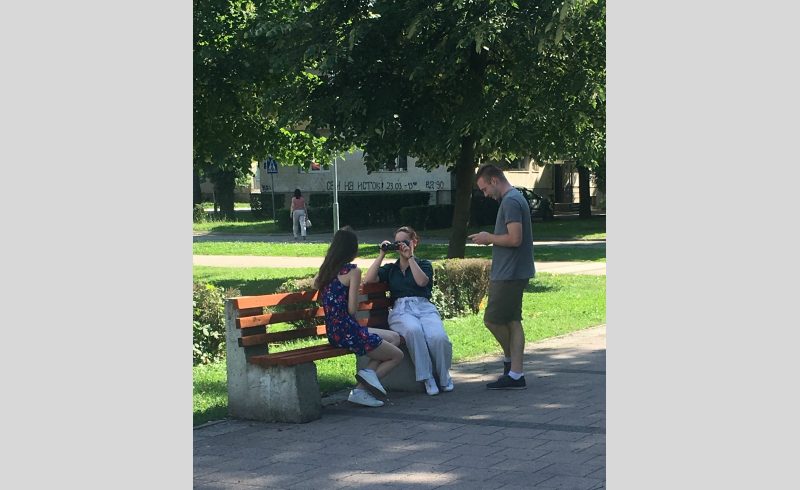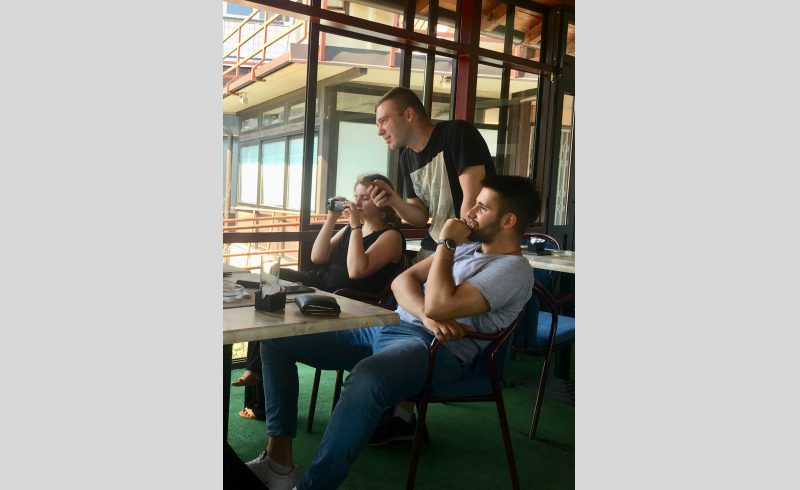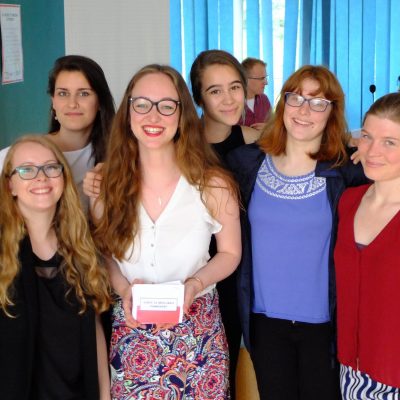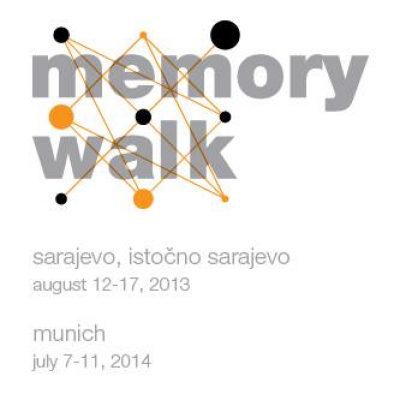Article
The theme of HIA Fellows Kate Powers, Mac Mugabo, Rachel Forster and Eryk Gawronski’s Action Project is new approaches to reconciliation, where they decided to divide the overarching concept of reconciliation into smaller topics such as mobility and attitudes between different young people that live in Bosnia & Herzegovina.
The Fellows traveled to three different so-called “divided” cities where they interviewed young people asking: what it was like for them to live in divided cities? How had they felt about traveling and going to the “other side” and if they didn’t travel, what were the obstacles they faced?
The Fellows found that regardless of where they traveled, so many young people think that Bosnia is united and that no war will be able to divide the country.
Their collective efforts were made into a video, representing what the young people of Bosnia & Herzegovina think of reconciliation and mobility, which was presented to a small group of young people at a workshop on film-making by Humanity in Action. The Fellows found that regardless of where they traveled, so many young people think that Bosnia is united and that no war will be able to divide the country.
WATCH THE MOVIE HERE
PROJECT OVERVIEW
Goals
The overarching aim of this Civic Action Campaign was to promote internal mobility within Bosnia and Herzegovina’s two entities – namely the Republika Srpska and the Federation of Bosnia-Herzegovina – and especially for youth (defined as anyone aged between 15 and 35 years old). By focusing specifically on ‘divided cities’ and encouraging young people from different entities and ethnic groups to look beyond their comfort zone and discover new parts of their hometowns, the organisers hoped to encourage inter-ethnic contact and knowledge of one another in a way that created positive associations to counter negative ethnonationalist messaging. As a result, the campaign’s objectives were threefold:
- To discover how young Bosnians viewed their cities, how they experienced the division – if at all – and if so, how it affected their daily lives;
- To challenge assumptions about youth, inter-ethnic group contact and the importance of entity borders in Bosnia and Herzegovina;
- To encourage positive messaging between entities, ethnic groups and youth in different cities.
Due to the logistical limitations placed on the campaign, it was not envisioned as a long-term project offering a clear path towards youth reconciliation. Instead, the focus was placed on gathering input from local youth and assessing the responses to the organisers’ initiatives, both during the data collection process and in the viewing. Hopefully, this campaign will offer valuable insight into how Bosnian youth from both entities perceive themselves, their country and the people within in a way that will allow others to formulate effective, systematic approaches to reconciliation.
Activities
To achieve these goals, the campaign was split into two parts: the first and most time-consuming was the filming of a short video compiled from dozens of interviews of young people living in Foča and Ustikolina, Sarajevo and Istočno Sarajevo, and Doboj, which were then arranged thematically according to the topics discussed.
Once the video was ready, it was shown to a small group of young Bosnians participating in a film workshop organised by Opera Circus, a UK-based NGO. The floor was then opened for a short discussion where the audience was able to share any questions, comments or feedback inspired by the project.
The video was also made available on Humanity in Action’s official YouTube channel, where it will be accessible to an even wider audience.
Video Realisation
The longest and most crucial part of this campaign was the realization of the video interviews; the first step was, necessarily, the elaboration of a series of questions which could be asked and, although occasionally adapted (e.g. in the case of students whose hometown was different from the city they were interviewed in), remained a consistent and coherent ensemble. Open-ended questions were also favored, as they encouraged participants to give longer and more diverse responses without trying to steer them into a specific direction. Only the final question was intentionally phrased in a way to elicit a positive response, although participants were also given the option not to answer it if they preferred not to.
The selected questions were as below:
- What is your impression of the “other side” of your city?
- If you have been to the “other side”, what was your experience like? Did you feel like you were still in your hometown? OR If you have not been to the “other side”, are there any places (bars, parks, etc.) where you would like to go?
- How do you think people from the “other side” feel when they come over to your part of the city?
- If you could send a positive message about your part of the city to the other, what would it be?
The questions were then translated into the local language to ensure interviewees had the option to speak in their native tongue if preferred. This was made clear to them at the beginning of every interview, along with a request for their consent to be filmed (or recorded if they were unwilling to have their face shown on camera). All interviewees were offered a drink or a snack as part of the interviewee, both as a gesture of appreciation for their time and as encouragement to engage with the project.
Once all interviews had been recorded, the organisers went through the footage, sorting the interviews out according to whether or not they had been conducted in English, where they had been filmed, etc. The footage was then transcribed in order to facilitate the selection of relevant extracts (as well as the creation of subtitles), as well as to help establish the recurring themes and ideas discussed by interviewees. Finally, the selected extracts’ timestamps were written down and editing instructions were put together on how the final video should be assembled. The footage, timestamps, transcripts and editing instructions were all shared with a professional video editor hired for the project, with whom the organisers remained in regular contact to ensure the final product represented their vision.








